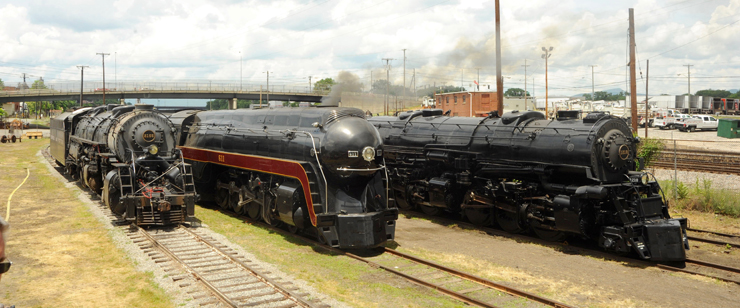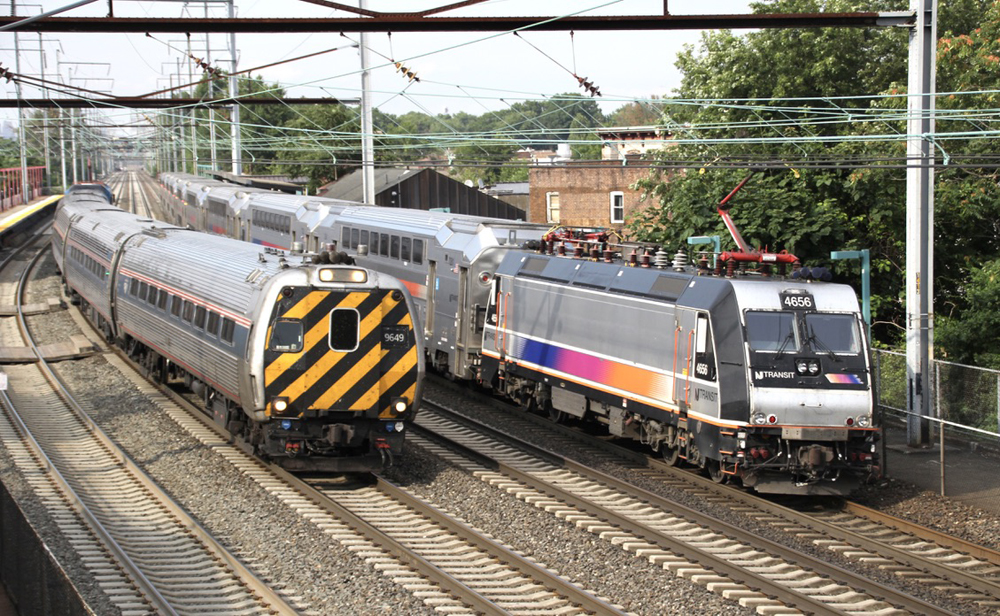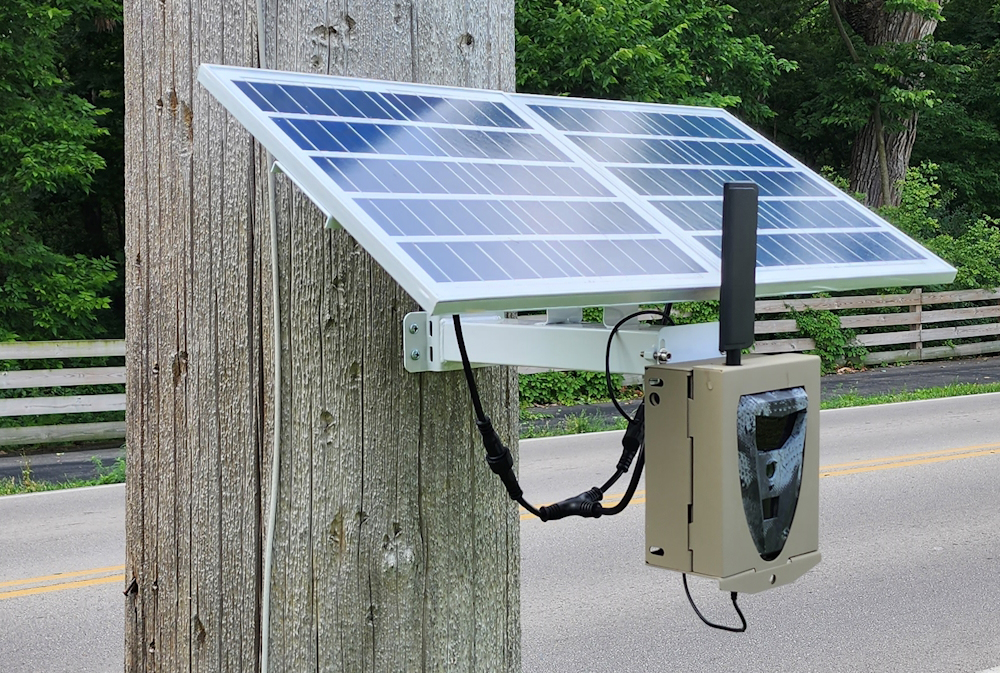Coby Ellison, curator at the National Transportation Museum, says the 2156 is being prepped for shipment back to Missouri after being on loan to the Virginia Museum of Transportation since 2015. Officials at the Virginia museum said in January that discussions were being held to potentially extend the five-year loan/lease of the 2156, but Ellison has confirmed that the locomotive will be returned in the near future.
Ellison says there currently is no timeline for the locomotive’s return. He says the National Transportation Museum is currently closed due to the ongoing COVID-19 pandemic, and the restrictions associated with the pandemic have made the timeline for the return of 2156 uncertain. He says he hopes the museum will open by June 1, but it remains uncertain if the locomotive will be returned by that date. “We’re just excited to bring it back,” Ellison says.
The 2156 was leased to the Virginia Museum of Transportation by the St. Louis museum in May 2015 in exchange for the Virginia museum’s EMD FTB demonstrator diesel. The steam locomotive was pulled dead in tow across Norfolk Southern trackage to Roanoke, arriving in time for the return of famed Class J steamer N&W No. 611 to operation in late May 2015.
Built in 1942 in Roanoke and retired in 1959, the 2156 is one of only two N&W 2-8-8-2s that survive. The arrival in Roanoke of the Y6a in 2015 marked the reunion of N&W Class J No. 611, the 2156 and N&W Class A No. 1218, the first such reunion of N&W’s three famed locomotive types built in Roanoke in more than a half-century.
Will Harris, a board member and former Virginia Museum of Transportation president, says the museum made an attempt to keep the 2156 in Roanoke. “We made a substantial offer to purchase it and included some exchange, but we just weren’t able to come to an agreement,” he says. “They couldn’t have been any nicer to work with. Hopefully, in the the future, we can work out another exchange and possibly have it back here again alongside its two sisters.”
Harris said the 2156’s visit to Roanoke would not have been possible without the assistance of Norfolk Southern and former NS CEO Wick Moorman. He also said Bob Saxton with NS helped make the project possible.
Ellison says the 2156 will again be shipped via Norfolk Southern, and the Virginia museum’s FTB diesel will also be shipped back to Roanoke. Harris says the 2156 will be prepped for shipment at the Norfolk Southern Schaffer’s Crossing shops. He says the locomotive’s connecting robs will be removed from its drivers, and greasing and inspection will then be performed prior to shipment.















Someone needs to take a rod to the copy editor: “the locomotive’s connecting robs will be removed from its drivers” Really TRAINS? As to the move, it is a kick to Roanoke while it is down. The “New Southern” has just about wiped out the Norfolk & Western Railway with the move of most offices from the city, closure of the hump, and now the shuttering of the shops.
It isn’t the “St. Louis Museum of Transport”, Jeffrey. It’s the National Transportation Museum, which has a collection encompassing the *nation* regardless of whether or not a given railroad served St. Louis.
There is an E8 at the St Louis Museum of Transport – a Burlington (CB&Q) unit in its silver Zephyr attire. The N&W didn’t serve STL until 1964, well after its steam engines had been retired. Why else would a UP Big Boy or a Santa Fe Texas type be at the museum? Neither road served STL until in the 1980s/1990s.
I’m conflicted. I agree with those who say she should remain in Roanoke with 1218 and 611, but since I live in St Louis I selfishly want it to be returned so I can see it easier and also so our museum has great exhibits. I’d give up the FTB any day in exchange for 2156.
Todd, Illinois Railway Museum has NW 2050 which is a 2-8-8-2 but it’s one of the Y3 class.
Article indicates there is another Y6 saved somewhere. Wikipedia says 2156 is the sole survivor of the class. Can someone clarify?
I recall reading that, in addition to the FT unit, there was an ex Wabash E8 that was also on loan to the St. Louis museum. It is a pity that the Wabash unit could not be traded for the Y6 as it would be more at home in St. Louis than the Y.
There’s just something written in the stars that says these three beautiful locomotives ought to slumber in the company of each other.
Zach, it didn’t start that way. The National Museum of Transportation began in 1944 as the St. Louis Railway Historical Society. The society was formed to preserve local transportation equipment of the past. In 1979, the STL County Park Department assumed responsibility of what had grown into the Museum of Transport. In 2017 (two years after I left STL), the museum went private again and became the National Museum of Transportation.
Mr. Jankowski: The news story does indeed say that the FTB will return to Roanoke.
Does this mean the FTB will return to Roanoke?
(continued from below) Separating the 2156 from the other two is a travesty, and I implore those at the National Transportation Museum to look at this as a real blow to railroad history interpretation, and to try to see the situation from a broader perspective. After all, the mission of the NTM is to preserve railroad history through equipment displays. This move does not serve that mission.
(continued from below) Displaying 2156 in St. Louis, however, without the A and J, significantly weakens the context of the engine’s history, the history of the now-closed Roanoke shops, and the relationship between the railroad and Roanoke. The display of the A and J in Roanoke, without 2156, weakens the impact of that display, as if one of the legs of the three-legged stool is missing. The manufacture and operation of the A, J, and Y are an important part of railroad history in the East.
I am very disappointed to hear this news. I understand that the loan agreement was only for five years, and the National Transportation Museum has every right to have the engine returned since it belongs to them, and the agreement period has expired. And, I’m glad to hear that the negotiations between the Virginia Museum of Transportation and the NTM were conducted in a professional and respectful manner – they just could not agree on a “price.”
Likewise, it’s the Virginia Museum of Transportation, yet there seems to be a heavy focus on the N&W. Meanwhile the RF&P E8 has languished there to the point of likely being unrecoverable.
MOT has a right to have their locomotive back. That said, another disappointment in history for Roanoke.